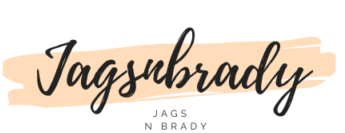Every teacher deals with a plethora of inquiries about language and the world regularly. The English dictionary has approximately 500,000 words, and many of our students may manage to remain buoyant in this ocean of academic terminology.
Given the range and complexity of the English language’s vocabulary and how important it is in mediating the academic curriculum of a school, every teacher must have a firm grasp of vocabulary instruction in the classroom. Forms of Adjectives, nouns, and other significant sentence ingredients need to be understood.
The value of vocabulary growth in reading, writing, and speaking cannot be overstated. Of course, most of our students’ vocabulary growth will occur implicitly outside the purview of classroom teaching.
This vocabulary expansion is cumulative and progressive, built on reading and talking, and is frequently buried in plain sight in the crowded classroom.
Our students’ vocabulary gaps, rather than the subtle improvement, are all too frequently visible to instructors. These voids may manifest in a strict examination, a poor answer in class, or a subtly restricted written message.
Crucial Terms for Creative Writing
While you both begin the lesson, make sure your youngster is comfortable with the following crucial terms:
• Verbs are action words such as “run,” “maintain,” and “feel.”
• Adverbs are words that express how something is done, such as rapidly, affectionately, or menacingly.
• Adjective: a term that characterizes a noun, such as red, lovely, or enormous.
• A synonym is a word or phrase that signifies the same as or nearly the same as another term, for example, furious and provoked.
• Similes: a turn of phrase in which one item is compared to another object of a different sort, such as she is as clever as Einstein.’
• Gothic is an example of a genre, a style or type of art, music, or literature.
• A protagonist is a fictional figure who appears in a novel, play, or film.
Characters in creative writing must portray what they see, what they say, and what they do. Increasing the variety of verbs employed may add emphasis and have a tremendous influence.
Adjectives are used to characterize a noun by adding information to it. They are an excellent approach to bringing your descriptions to life since they assist the reader in imagining what you want them to. Begin by creating a list of adjectives that may readily bring people and settings to life.
A common misconception is that students need a dictionary for linguistic competence. To pick the correct word, students must have spelling (orthographic) knowledge and a depth of word knowledge. Instead of depending on dictionaries, many students find themselves in a catch-22 situation.
Make a mental scene before you begin writing. Having some characters and problems ‘in stock’ is a terrific approach to prepare for writing. That entails having a mental image of them willing to throw into a piece of prose and adapting it to the specific job at hand.
Simply going through the creative process is described as having no constraint that can make it faster for future projects! Make a ‘pen picture’ for each of them. Request that your youngster creates spectrum charts for the words said and ‘looked.’ Containing the Random Words creates an atmosphere in creative writing, but they must have sense.
Add a dimension for an added difficulty! In addition to a horizontal slow – quick’ scale, add a vertical strong-weak’ scale. Here, your youngster may consider how the behaviors are vertical vital as well.
